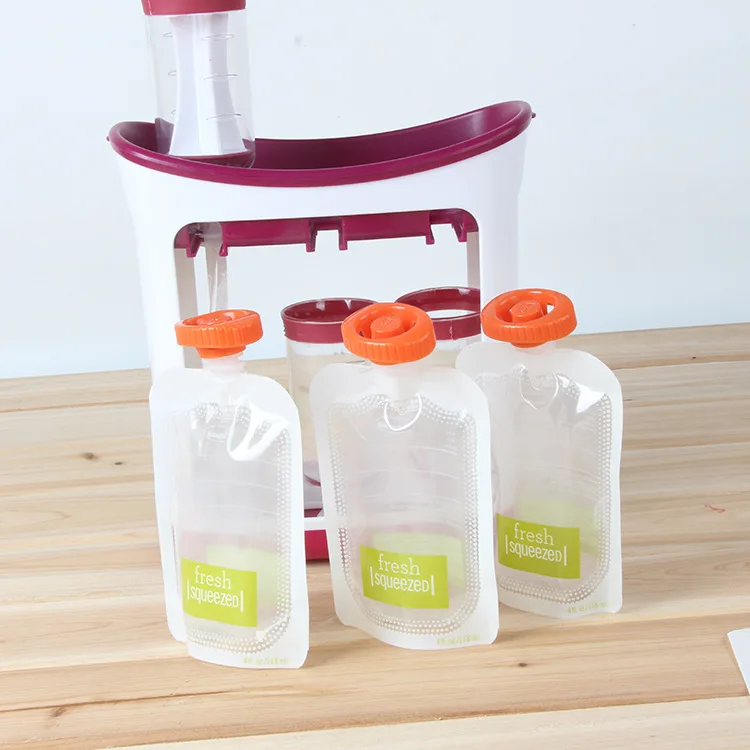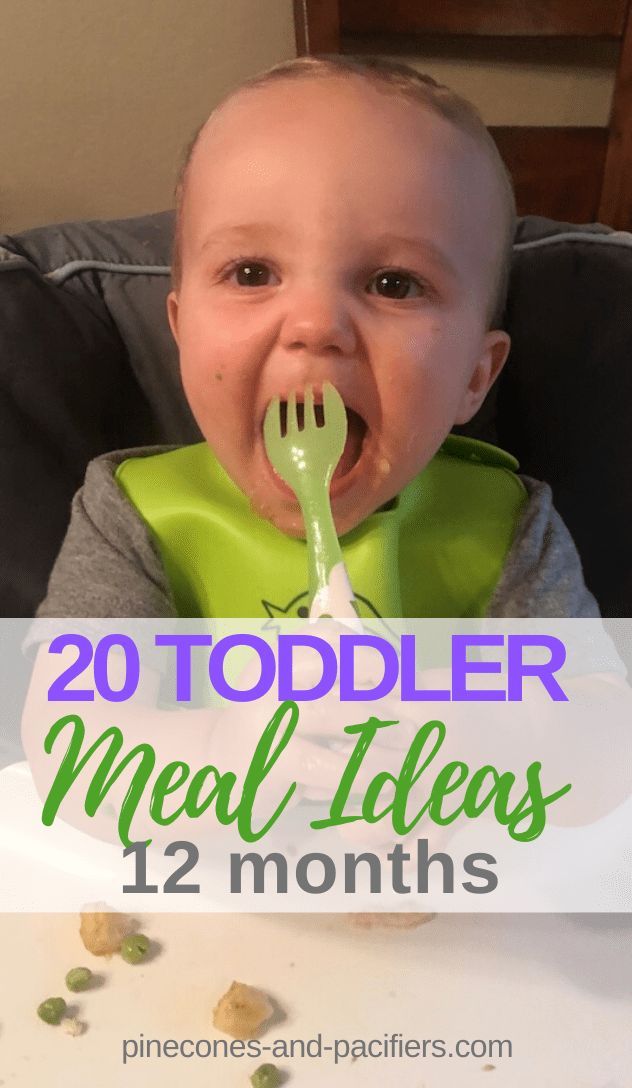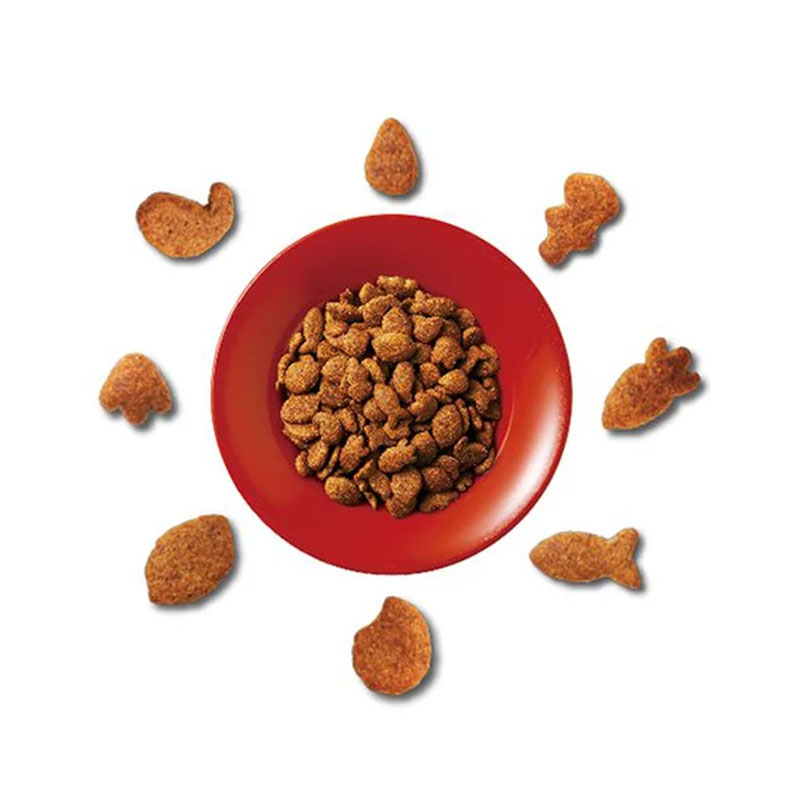When do you start 2nd stage baby food
What It Is, When to Start, and Options to Try
Accompanying your child through the different stages of learning how to eat real food is an exciting journey. Sometimes, along with the sense of pride — Look, they polished off the whole jar! — you can feel a little confused. How are you supposed to navigate the milestones?
Let’s start at the beginning: What do the stages of baby food mean, anyway?
Rome wasn’t built in a day, and your baby’s digestive system won’t make the leap from liquid to solid in one day either. That’s what the stages of baby food are for — to help your baby manage the mechanics of eating and to make the transition easier on your baby’s digestive system.
Defining the stages across the brands
While the different stages of baby food aren’t standardized (it would make your life easier if they were!), most popular brands more-or-less follow these four stages:
- Stage 1: 4 to 6 months (watery puree of a single ingredient)
- Stage 2: 6 to 9 months (thicker texture that is strained or mashed)
- Stage 3: 10 to 12 months (mush that has soft, chewable, small chunks)
- Stage 4: After 12 months (finger foods and small, soft pieces of foods you share from your own supper)
What is the difference between stage 1 and stage 2 food?
Stage 1 foods are pretty watery. They’re pureed into a smooth paste that can drip off a spoon easily, so stock up on your bibs. These foods are usually made of a single ingredient: oatmeal cereal, apple, carrots. Your baby will start off eating about half a teaspoon of this.
Stage 2 foods get more exciting. These are strained or mashed into a dense paste. They’re made with a combination of foods that can include legumes and even meats or fish. They may combine flavors, like fruit and veggie blends. Your baby’s appetite is growing and you’ll have to keep pace with bigger portions.
At around 6 to 9 months, your baby is probably ready to move on to stage 2 foods. Not every baby will stick to this schedule simply because every child is a world to their own.
Here are some signs that your child is ready to move on:
- Tongue reflex: At around five months, your child will start losing their tongue thrust reflex and won’t immediately push out the food that you try to feed them.

- More please: They’ll easily polish off the stage 1 foods and look hungry for more.
- Variety: They’ll have eaten foods from all the food categories (vegetables, fruits, legumes, grains, meat) and shown no allergy or intolerance.
- Enjoyment: They’re managing spoonfuls of stage 1 foods easily, mouthing and swallowing happily.
At this exciting stage, feel free to give your baby most types of foods. By offering them a wide range of tastes and textures, you’re giving them a foundation for healthy eating habits — as well as making it easier for yourself. Keep in mind the following safety points:
- Choking hazards: Avoid nuts, seeds, and popcorn at this stage. And make sure to slice round foods like grapes and hot dogs lengthwise.
- No honey: Children younger than 12 months should not be given honey because it could lead to a botulism infection.
- No juice: Follow AAP guidelines and stick with breast milk, formula or a little water and steer clear of juices.

- Safe feeding: Always strap your child into their high chair and keep an eye on them while they’re eating.
And if you’re wondering about peanuts, here’s the scoop: A 2017 release from the National Institutes of Health suggests exposing children to peanut-containing foods as early as 4 months old. (Wait till 6 months for children with mild or moderate eczema.)
Surprised? Don’t be. A recent study suggested that Israeli kids rarely suffer from peanut allergies because they’re munching on Bamba, a peanut-based snack, from as early as 3 months. Talk to your doctor about suggested safe ways to incorporate peanut products into your little one’s diet.
What’s on the menu for stage 2 baby foods? Basically, you can go the store-bought or the homemade route. Or you can mix both depending on how much time you have. It’s up to you and your personal schedule.
Here are tasty ideas for both options.
Store-bought stage 2 baby food
- Plum: These organic blends come in easy-to-transport pouches.
 Try pear, spinach, and pea, or banana and pumpkin.
Try pear, spinach, and pea, or banana and pumpkin. - Beech-Nut: Options are available in jars and pouches. Serve up some apples and bananas or pineapple, pear, and avocado.
- Earth’s Best: Another organic option, in pouches or jars. Try sweet potato, barley, and garbanzo or pasta with tomato and white bean.
- Gerber: A classic, whether served up from plastic tubs, jars, or pouches. Flavor combinations include peach mango and oatmeal or chicken noodle dinner.
Remember to monitor your little one while they’re eating. Pouches are handy, but the caps can be a choking hazard. Glass jars are at risk of breaking, so keep them out of baby’s reach. Your baby should always enjoy snacks and meals with attentive adult supervision.
Homemade stage 2 baby food
Cooking up a storm for your baby’s budding taste buds at this stage doesn’t have to be challenging. Here are a few recipes to get you going. (You can find even more baby food recipes here. )
)
Don’t shy away from spices and herbs: your baby will appreciate the added flavor, and the micronutrients in them will give their immune system a boost.
- Apple, butternut, and carrot: Boil the ingredients until they test soft with a fork. Drain some of the water, but set it aside in case you need to thin the mixture. Sprinkle in a little curry and blend.
- Blueberries and chickpeas: You can cook up your own chickpeas or use a prepared version to save time. Mix equal amounts of blueberries and chickpeas. Blend and add breastmilk, formula, or water to get the right consistency. You can also add in some rice for extra oomph and texture.
- Salmon with roasted zucchini and fennel: Spray the salmon and vegetables with oil and broil for about 15 minutes. Add chopped parsley and blend. You can thin the mixture with breastmilk, formula, or water.
Enjoy this stage with your baby because it won’t be long before they move on to the next stages. And then, sooner than you think, you may be facing competition for that last slice of caramel-topped cheesecake.
And then, sooner than you think, you may be facing competition for that last slice of caramel-topped cheesecake.
When is a child ready to try a bit more texture?
Once your baby has mastered the art of slurping down smooth purees, it may be time to expand their culinary horizons with Stage 2 baby food. Your little gourmand isn’t quite ready to dine on a plate of spaghetti and meatballs just yet, but Stage 2 foods will give them the opportunity to sample new tastes, as well as consistencies.
Think your baby is ready to graduate onto the next stage of baby food? Here, parents and experts weigh in on Stage 2 baby food. Bon appetit!
What is Stage 2 baby food?
While the jarred Stage 2 baby food you find at the store is typically combinations of food (“sweet potato and chicken dinner”), it’s important to keep in mind this stage is more about the consistency of the food.
“While Stage 1 baby food is completely pureed, Stage 2 baby food has a bit more texture to it,” says Dr. Zulma Laracuente, a pediatrician in Alexandria, Louisiana. “The concept behind slowly transitioning baby from purees to thicker solids is to get them used to chewing and swallowing.”
Zulma Laracuente, a pediatrician in Alexandria, Louisiana. “The concept behind slowly transitioning baby from purees to thicker solids is to get them used to chewing and swallowing.”
Of course, every child develops at their own individual pace, so check with your child’s doctor for baby food recommendations during the first 12 months.
When to start Stage 2 baby food
The Stage 2 baby food age may vary based on when your infant started eating Stage 1 foods. The general age recommendation for Stage 1 baby food is between 4 and 6 months, so taking into consideration how long — and how well — your child has been eating these foods will help you determine if they’re ready to move up. According to Laracuente, babies are usually ready for Stage 2 between 6 and 8 months old — but make sure your little one has honed their Stage 1 skills before making the leap.
“Once your baby has done well with Stage 1 solids and has tried multiple foods, it is safe to advance to Stage 2 baby food,” says Dr.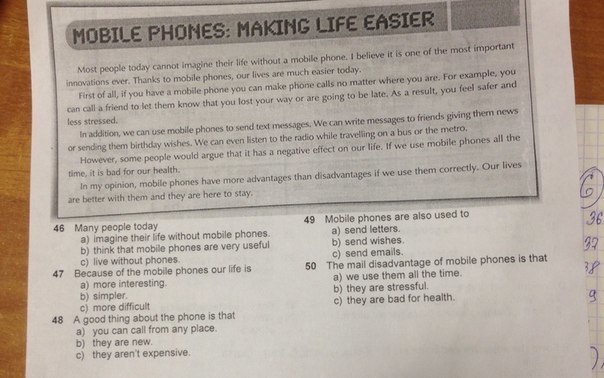 Melanie Custer, a pediatrician at at West Bend Pediatrics at Children’s Hospital of Wisconsin. “These foods usually have multiple ingredients, including some spices and are thicker in consistency.”
Melanie Custer, a pediatrician at at West Bend Pediatrics at Children’s Hospital of Wisconsin. “These foods usually have multiple ingredients, including some spices and are thicker in consistency.”
“These foods usually have multiple ingredients, including some spices and are thicker in consistency.”
DR. MELANIE CUSTER, PEDIATRICIAN
Signs baby is ready to start Stage 2 food
How do you know if your baby is nailing it with their Stage 1 foods and ready for the next step? Simply put, they’re eating and swallowing.
“As your baby’s oral skills develop and improve, you can move on to Stage 2 foods, which are purees with small chunks and texture,” says Jenifer Thompson, R.D., an advanced practice dietician at Johns Hopkins in Baltimore.
Thompson says in order to move on to Stage 2 foods, babies should be consistently taking the spoon in their mouth when you offer it to them, without spitting or pushing it back out.
“Once my baby was no longer grimacing or letting his food dribble onto his chin, I knew we were ready to move onto Stage 2 foods,” says mom of two Darcy McConnell of Garwood, New Jersey. “I actually have no idea how old he was when we made the switch since I based it off of how well he was eating!”
“I actually have no idea how old he was when we made the switch since I based it off of how well he was eating!”
What Stage 2 baby foods to start with
It’s important to expose your child to a number of foods, most of which are safe at this point.
“By the time they are 7 to 8 months, babies should be eating a variety of foods from different food groups, including cereals, meat and other proteins, yogurt, cheese, vegetables and fruits,” says Thompson.
“Most foods can be prepared for any stage, so long as they’re texturally age-appropriate,” says Dr. Kristen Treegoob, a pediatrician at Children’s Hospital of Philadelphia. “When we think of Stage 2 baby food, we’re thinking of thicker purees with some mashable bits.”
Experts advise introducing as many different foods as possible during this stage of food development so your baby gets accustomed to them.
“While bananas, applesauce and peaches are good options and most babies like them, as they are naturally sweet, it is also important to try other foods that aren’t as common and popular, such as beets, rhubarb and asparagus, so they develop a taste for them,” says Custer.
Another thing to keep in mind is that the American Academy of Pediatrics (AAP) no longer recommends delaying the introduction of allergenic foods, particularly peanuts. While it was once advised to wait until your baby was at least 10 months to introduce peanut-containing foods, the AAP now recommends giving babies with no known egg allergy or eczema, infant-safe forms of peanut between 4 to 6 months old. Babies with mild eczema should wait until at least 6 months, and for babies with severe eczema, speak to their doctor before giving them peanut-containing foods. (To find out if your baby has an egg allergy, they must be tested by their pediatrician.)
Which foods to avoid during Stage 2
Even though your little one is venturing into new food texture territory with Stage 2, you should still avoid giving them chunks and small pieces of food, which can pose a serious risk. (Food may be thicker at Stage 2, but it’s still all about the purees and mashes at this point.)
“Infants may have any food that is texture-appropriate for their developmental feeding stage, but it’s important to stay away from choking hazards, such as whole grapes, nuts and seeds,” says Treegoob.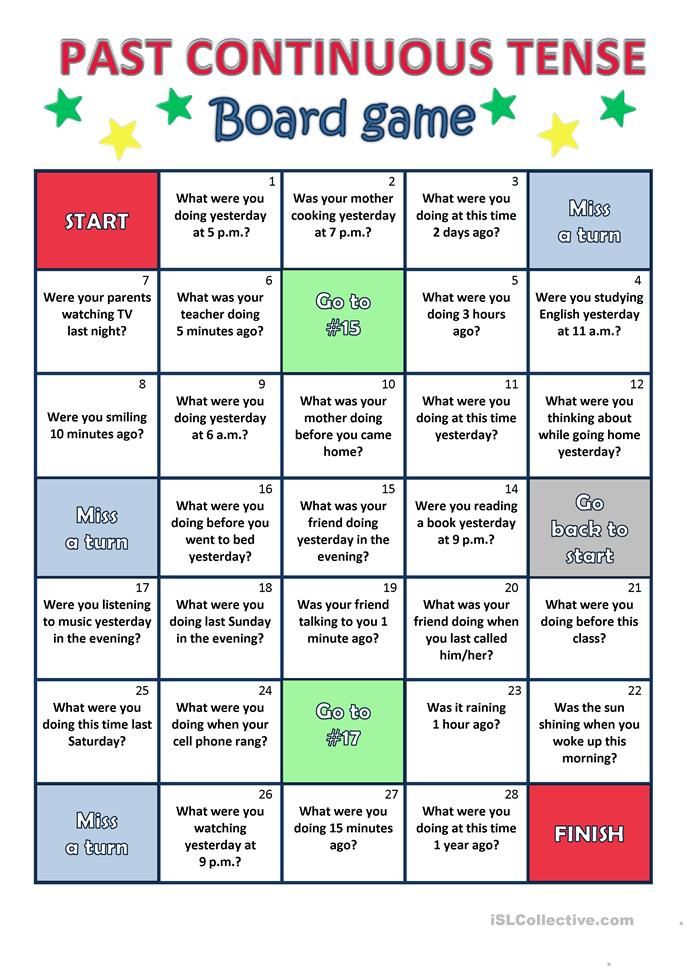
“Infants may have any food that is texture-appropriate for their developmental feeding stage, but it’s important to stay away from choking hazards, such as whole grapes, nuts and seeds.”
DR. KRISTEN TREEGOOB, PEDIATRICIAN
Also, avoid giving your baby honey — raw or cooked — before the age of 12 months, as it may cause a botulism infection.
And finally, when it comes to your baby’s beverage, steer clear of juice. The AAP recommends parents eschew juice, which has “no nutritional benefits over whole fruit,” until at least 1. “At this point, it’s best to stick with breast milk, formula or the odd bit of water (1 to 2 ounces a day), which is mainly for introducing your baby to the skill of using a sippy cup,” says Thompson.
How to start Stage 2 foods safely
Baby should be sitting in a highchair when eating and never left alone. You’ll still be spooning food into your baby’s mouth at this point, but don’t be afraid to let your little one take a whirl at self-feeding in order to get in some practice using utensils.
“At around 9 months, we started letting our son try his hand at feeding himself in his highchair,” says mom of two Erin Henderson, of Waltham, Massachusetts. “It was a mess, but he obviously enjoyed the learning experience.”
Also, during the latter half of your baby’s Stage 2 stint, they may learn how to grab things with their thumb and forefinger and bring them to their mouth.
“Between 8 and 12 months, babies develop the pincer grasp ability and should be able to pick up small pieces of finger food, such as Cheerios or puffs,” says Thompson.
As your baby grows and hones their eating skills, they’ll cut down a bit on how much breast milk or formula they drink — but keep in mind, that should still be their primary source of nutrients.
“Most infants will naturally start to moderate their breast milk or formula intake once their solid intake increases,” says Treegoob. “Solid food may start to account for a significant source of nutritional intake closer to 7 to 9 months. At this time, parents may notice that their baby shows interest in smaller or less frequent bottle or breastfeeds. As long as their weight remains on track and baby is drinking enough milk to stay well-hydrated, there should be no need for concern. Infants typically take somewhere between 24 to 40 ounces of breast milk or formula between 4 to 6 months and 24 to 32 ounces from 6 to 9 months.”
At this time, parents may notice that their baby shows interest in smaller or less frequent bottle or breastfeeds. As long as their weight remains on track and baby is drinking enough milk to stay well-hydrated, there should be no need for concern. Infants typically take somewhere between 24 to 40 ounces of breast milk or formula between 4 to 6 months and 24 to 32 ounces from 6 to 9 months.”
According to the AAP, babies should be eating about 4 ounces of solids (about one small jar of baby food) at each of their meals. And if you’re wondering how long baby food lasts, experts typically recommend 24-48 hours in the fridge or up to 3 months in the freezer.
Lastly, bear in mind that if at first you don’t succeed with a food, try, try again.
“At this age, if babies grimace when taking a bite or shake themselves, it is most often because of a texture issue, not the actual taste,” says Custer. “It is important to keep introducing these foods as it may take a baby up to 15 times to get used to a texture before you can say for sure he/she doesn’t like it. ”
”
Ready for the next stage?
- Stage 3 baby food
Scheme of the first feeding of a child (table) with artificial and breastfeeding, what can be given to a baby
The need for the introduction of complementary foods in modern mothers has long been beyond doubt. Pediatricians, pediatric nutritionists and other graduates unanimously say that at some point both mother's milk and formula are not enough to satisfy the growing needs of the child's body for useful trace elements and vitamins. That's when it's time to introduce complementary foods. The fact that your baby is ready to get new experiences and try tastes so far unknown to him is indicated by the presence of the following signs:
• doubling the initial weight of the child,
• ability to sit with support,
• child does not push food out of his mouth,
• curiosity and desire to try something from the common table.
Signs of malnutrition in a child, constant feeling of hunger and anxiety associated with it, weight loss can also be important signals for the start of complementary foods. In these cases, it is recommended to immediately contact a specialist and share your observations with him.
In these cases, it is recommended to immediately contact a specialist and share your observations with him.
Contents: Hide
- When to start the introduction of complementary foods
- with which products to start the completenance of complementary foods
- We avoid errors
- Table of complementary foods for months with artificial feeding
- Table of complementary foods when breastfeeding
- start introducing complementary foods
The timing of the introduction of complementary foods is still debated. But if we bring scientific reasoning to a common denominator, then the conclusion suggests itself that complementary foods can be introduced from about six months, and for children with certain medical indications - from 3-5 months. Many experts believe that half a year is the ideal time for complementary foods, when the first colic is over, and the digestive system has matured enough to try new foods. The exact answer to the question of when to introduce complementary foods in a particular child can only be given by a pediatrician.
 In some situations, it may be necessary to introduce new dishes into the baby's diet as early as 4 months, and someone will be ready for this only after six months. nine0007
In some situations, it may be necessary to introduce new dishes into the baby's diet as early as 4 months, and someone will be ready for this only after six months. nine0007 What foods should I start introducing complementary foods with
Fruits, vegetables or cereals? Which of these foods are best for starting complementary foods? Experts have long answered this question as follows: if the baby is underweight, suffers from frequent loose stools, it is advisable to start with cereals (of course, gluten-free and dairy-free), and if everything is fine with weight, then vegetables will be the first in line. Also, vegetable complementary foods are recommended for breastfed children with constipation problems, rickets, or those born prematurely, whose weight is normal or exceeds the standards. nine0003 Why not fruit? Everything is simple. Fruits have a bright and sweet taste, and after trying an apple or banana first, the baby is likely to refuse zucchini or broccoli, which do not have the same rich taste.
 Therefore, the introduction of fruit purees and juices into the diet is postponed until vegetable purees become a familiar dish on the menu. As for cereals, buckwheat, rice and corn are first introduced, as they are characterized by the absence of gluten, saturate and are well digested.
Therefore, the introduction of fruit purees and juices into the diet is postponed until vegetable purees become a familiar dish on the menu. As for cereals, buckwheat, rice and corn are first introduced, as they are characterized by the absence of gluten, saturate and are well digested. Read also: How to properly teach a child to different tastes
Avoiding mistakes
In order for the introduction of complementary foods not to become a test for either the baby or the mother, you need to follow some recommendations. Most importantly, be patient and don't get too upset if things don't go according to plan. Each child is individual, as are their taste preferences and needs.
• Start complementary foods if the baby is perfectly healthy. Contraindications for the introduction of new products will be teething, colds, stress associated with separation or moving, recent or planned vaccinations. nine0003 • New foods are introduced gradually, starting with half a teaspoon. In the absence of allergies or digestive problems, the amount of the product is approximately doubled the next day. Sometimes the introduction of a new product stretches up to a week. Do not rush, give the child the opportunity to "taste" this dish. If the baby flatly refuses the offer, postpone the acquaintance for at least a week.
In the absence of allergies or digestive problems, the amount of the product is approximately doubled the next day. Sometimes the introduction of a new product stretches up to a week. Do not rush, give the child the opportunity to "taste" this dish. If the baby flatly refuses the offer, postpone the acquaintance for at least a week.
• Do not force your child to eat. After all, your goal is to introduce your child to new tastes and help develop good eating habits. nine0003 • The best time for the first feeding is after the morning feed until 12 noon, when the baby is already hungry and ready to eat something else. In case something goes wrong, you will know about it during the day, not at night.
• In the event of an adverse reaction to the product, such as an allergy, seek medical advice immediately. Then, in agreement with the doctor, offer this dish after a certain period of time.
• Gradually increase the amount recommended by your pediatrician. If you don't fit within a week, don't worry.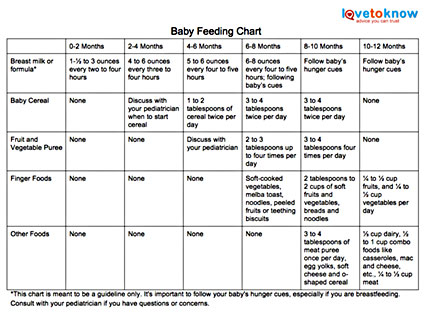 Listen to your child and act accordingly. nine0003 • Always start feeding with complementary foods. Only then offer breast milk or formula.
Listen to your child and act accordingly. nine0003 • Always start feeding with complementary foods. Only then offer breast milk or formula.
• Stick to a 5-meal schedule. Feed your baby at the same time every day.
• Food offered to the baby must be thermally processed - boiled or steamed. The dish should be at a comfortable temperature - about 37 ° C.
• Purees and cereals should be of a liquid consistency so that a child who does not yet know how to chew can comfortably eat them. Thicker dishes with lumps and pieces are introduced into the diet by about a year, when there are already several teeth. nine0003 • Do not use salt, sugar or spices when preparing complementary foods. Also, do not add them in order to force the child to eat something. Let the baby get used to natural tastes.
• Complementary foods are prepared at one time and should never be refrigerated until the next meal. Everything should be only the first freshness.
• If you prefer ready-made baby food, carefully study the top manufacturers, pay special attention to the shelf life when buying.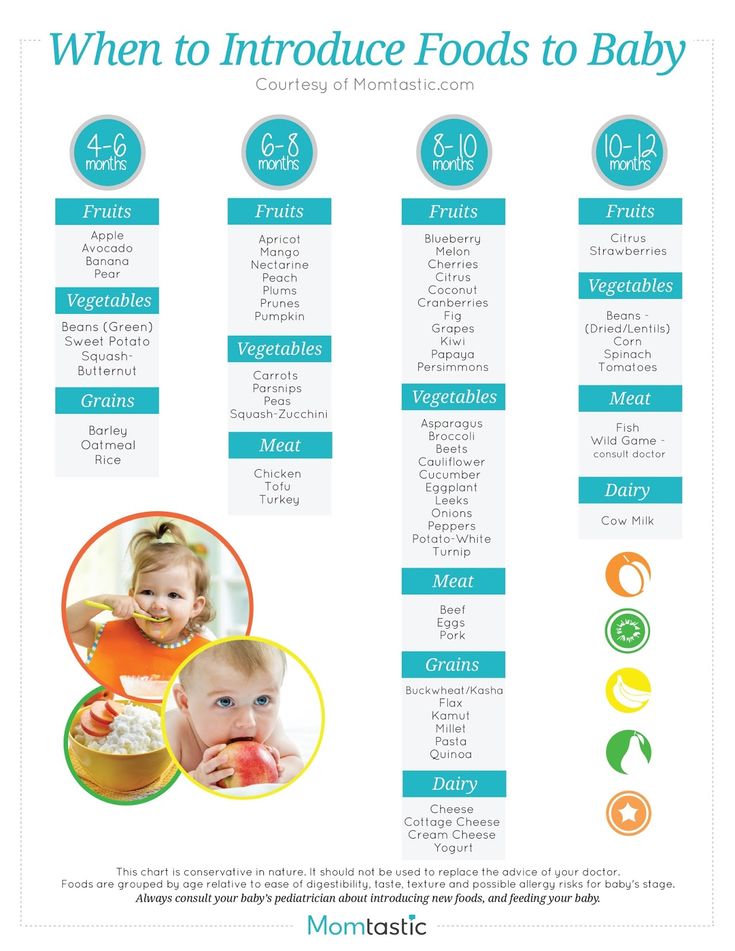 nine0007
nine0007 When introducing complementary foods, be guided by the data in the tables, which indicate which products, in what quantity and in what months experts recommend giving. 6 months
7 months
8 months
9 months
10 months
11 months
12 months
0068
180 g
200 g
200 g
Porridge
50–100 g
150 g
068
180 g
180 g
180 g
200 g
200 g
fruit
60 g
70 g
80 g
100 g
100 g
100 g
meat
50 g
60 g
60 g 9000
70 g
70 g
70 g
Cottage cheese
9000
068
10-30 g
30 g
40 g
50 g
50 g
Zhelki
1/4
1/4
1/2
1/2
1/2
Fish
9000
30 g
50 g
60 g
Vegetable
1 ml
3-5 ml
5 ml
5 ml
5 ml
9 Sl.

1 ml
3-5 ml
5 ml
5 ml
9006 8 months
9 months
10 months
11 months
12 months nine0012
Silent porridge
10–150 g
150–180 g
150–180 g
180–200 g 9000 g 9000 g 9000 g 9000 g 9000 g 9000 g 9000 g 9000 g 9000 g 9000 g
068
200 g
200 g
200 g
Vegetables
10–120 g
80–120 g
9000 9000 9000 9000 9000 9000 9000 9000 9000073
150 g
170 g
180 g
200 g
200 g
Military0007
-
-
-
-
-
-
160–200 ml
Fruits
5–60 g
50-60 g
60 g 9000 g 9000 g 900–100 g 900-100 G0007
100–120 g
100–120 g
100–120 g
meat
-
10-30 g
30–70 g
60–70 g
60–70 g
80 g 9000 9000
9007 9007 9007 9007 9007 9007 9007 9007 900EA0119 Cottage cheese -
-
5–10 g
40 g
40 g
50 g
yolk
-
-
½
½
½
½ --1
fish
-
-
-
10–40 g
10–40 g
50–60 g
9 vegetable oil
-
-
1 ml
3-5 ml
5 ml
5 ml
5 ml
Cream oil
-
-
1-3 g
3-4 g
5 g
5 g
5 g
, as you can see, the schemes for the introduction of pectoral and artificial feeding are not too much.
 In any case, starting to introduce new foods into the baby's diet, you will have to give the baby milk or formula for a long time, which are still the basis of his nutrition. nine0007
In any case, starting to introduce new foods into the baby's diet, you will have to give the baby milk or formula for a long time, which are still the basis of his nutrition. nine0007 How to introduce solid foods by month
3 months
If your doctor advises your breastfeeding or formula-fed baby to introduce complementary foods at 3 months, start with what the specialist has recommended to you. If these are vegetables, start with the classic - zucchini puree. This vegetable contains many beneficial nutrients and fiber. Start with half a teaspoon, carefully observing the reaction of the child's body. Be sure to supplement your baby with breast milk or formula afterwards. In case the child does not like the zucchini, try giving broccoli or cauliflower. Well, if the doctor advised porridge, feel free to choose buckwheat or corn. nine0003 4-5 months
After your baby has tasted zucchini, broccoli and cauliflower, it's time to add other vegetables: carrots, potatoes, green peas.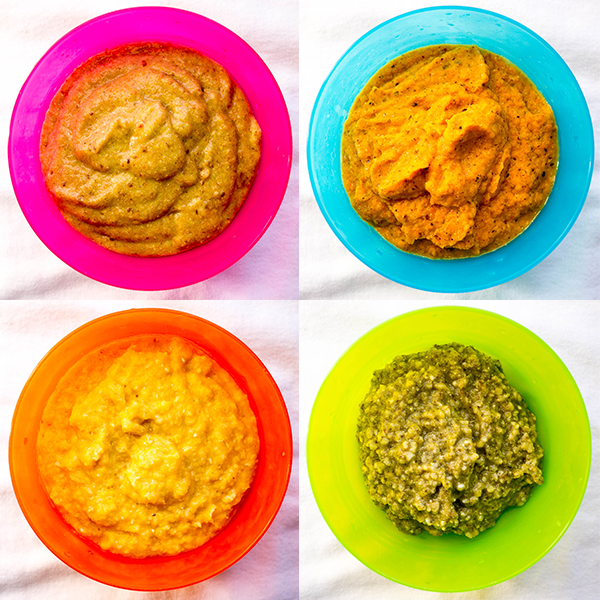 Do not overdo it with carrots, give it no more than 2 times a week. It is even better if this root crop is combined with other vegetables. It's porridge time! Gluten-free, water-cooked buckwheat, rice or corn. If the baby refuses to eat such cereals, add some breast milk or the usual mixture to them.
Do not overdo it with carrots, give it no more than 2 times a week. It is even better if this root crop is combined with other vegetables. It's porridge time! Gluten-free, water-cooked buckwheat, rice or corn. If the baby refuses to eat such cereals, add some breast milk or the usual mixture to them.
6 months
Time to pamper your baby with dried fruit compote, and formula-fed children start giving milk porridge. You can use a milk mixture to prepare such cereals, and in some cases, milk diluted with water. But in general, pediatricians do not advise introducing cow's milk into a child's diet before 8 months, as this can cause allergic reactions.
7 months
After the baby gets used to vegetable purees, you can try to give fruit purees and, if desired, juices, which should be diluted with water. There has been a lot of negative talk about juice lately. There is no fiber in them, but there are a lot of acids, which may not be completely safe for the stomach and have a high sugar content. So consult a pediatrician and think carefully about whether to give the baby juices or still prefer mashed potatoes and compotes. An excellent alternative to juices is children's herbal teas. Start introducing your baby to fruits with apples (preferably green varieties), bananas, and pears. The baby's menu is replenished with a new product - meat. Rabbit meat, turkey meat are best suited. Chicken and veal are also considered a good option. Low-fat pulp without streaks is taken. It is boiled or brought to readiness for a couple, then crushed in a blender or meat grinder. Meat with a gradual increase in its quantity is given as part of vegetable purees. Also at 7 months, it's time to give the baby a pumpkin. nine0003 8 months
So consult a pediatrician and think carefully about whether to give the baby juices or still prefer mashed potatoes and compotes. An excellent alternative to juices is children's herbal teas. Start introducing your baby to fruits with apples (preferably green varieties), bananas, and pears. The baby's menu is replenished with a new product - meat. Rabbit meat, turkey meat are best suited. Chicken and veal are also considered a good option. Low-fat pulp without streaks is taken. It is boiled or brought to readiness for a couple, then crushed in a blender or meat grinder. Meat with a gradual increase in its quantity is given as part of vegetable purees. Also at 7 months, it's time to give the baby a pumpkin. nine0003 8 months
An important moment in the introduction of complementary foods during artificial and breastfeeding occurs exactly at 8 months. It's time to give the baby a yolk. Watch the reaction of the body very carefully: if there are any manifestations of allergies. In case of a negative reaction of the body to chicken yolk, exclude it from the menu and try quail. It is best to give this product in the morning feeding from 9 to 11 hours. Along with vegetable and butter, gluten cereals are also introduced: oatmeal, millet, barley, pearl barley. It's time to give your child a taste of light vegetable soups. The components of the dish should be familiar to the child. Do not experiment by introducing dishes into the diet even with one unknown ingredient. Meatballs, boiled or steamed, are added to the meat in the form of mashed potatoes. nine0003 9 months
In case of a negative reaction of the body to chicken yolk, exclude it from the menu and try quail. It is best to give this product in the morning feeding from 9 to 11 hours. Along with vegetable and butter, gluten cereals are also introduced: oatmeal, millet, barley, pearl barley. It's time to give your child a taste of light vegetable soups. The components of the dish should be familiar to the child. Do not experiment by introducing dishes into the diet even with one unknown ingredient. Meatballs, boiled or steamed, are added to the meat in the form of mashed potatoes. nine0003 9 months
At this age, the baby should be introduced to the diet of low-fat fish: pollock, hake, perch, cod. For these purposes, fillets are taken and steamed, stewed or boiled. For the first time, fish are given in very small quantities. Start with once a week, gradually increasing to two. Remember that either fish or meat is given on the same day, without mixing these 2 products. If at the age of 8 months there were no prunes on the menu of the child, it's time to fix it.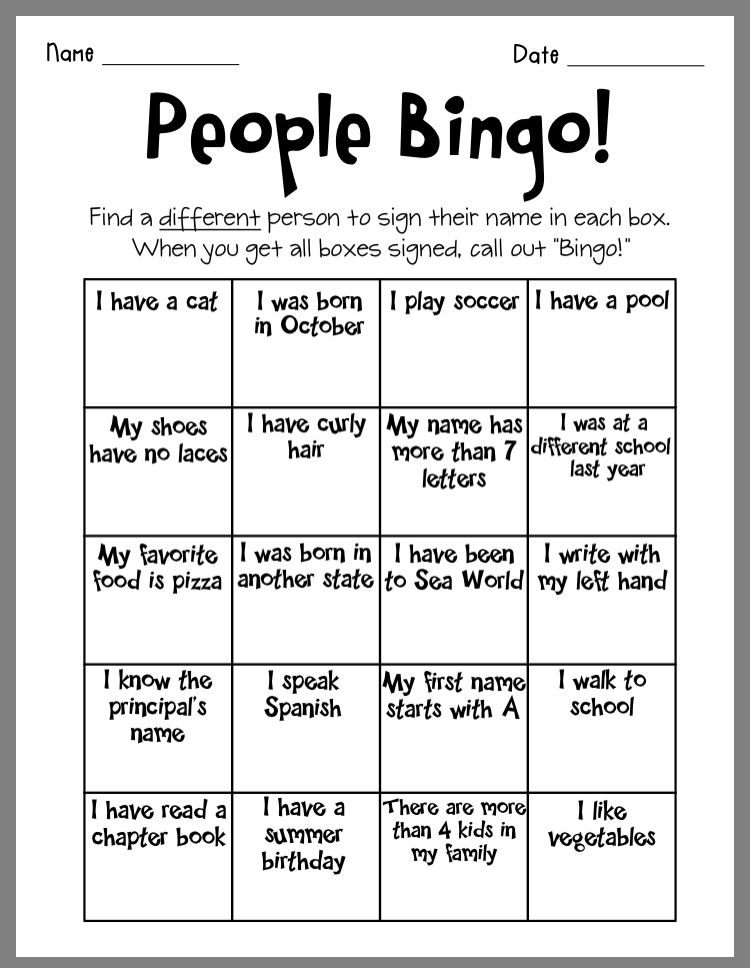 Dried fruit compote is also an excellent option, which at first is best diluted with water. However, you definitely shouldn’t get carried away with dried apricots, it’s better to wait until the baby reaches the age of one. nine0003 Months 10–12
Dried fruit compote is also an excellent option, which at first is best diluted with water. However, you definitely shouldn’t get carried away with dried apricots, it’s better to wait until the baby reaches the age of one. nine0003 Months 10–12
The diet characteristic of this period is characterized by an increase in portions to their maximum values indicated in the scheme. Also, it is at this age that the last feeding is gradually replaced by milk or kefir.Now that you've come across a set of essential tips, you're ready to start weaning. Once again, consult with a specialist, be patient, not forgetting to listen to the baby's body. We are confident that you will succeed. The main thing here, as in any other business, is a positive attitude. It all depends on you and your desire to raise a healthy and happy baby with competent eating behavior. Don't stop if you fail and don't get frustrated if things don't go according to plan. Everything will definitely work out.
 nine0007
nine0007 #Nutrition for children up to a year #Complementary foods
Baby food storage: containers, terms and rules
› ›
The body of a newborn baby is undoubtedly more vulnerable than adults and even children over one year old. But as long as the child is breastfed, he is more protected from aggressive environmental factors. The situation becomes more complicated when it is time for the first complementary foods. By this time, it is important for mom to learn everything about the proper storage of baby food. nine0007
Photo: depositphotos.com. Author: Petunya.
Contents
- Breast milk
- Accessories
- Avent containers
- Other sets
- Why is this important?
- Frozen food
- Requirements
- What do you need?
- Send to freezer
- Preparation
- Shelf life
- After opening
- Dry mix
- Tips
Breast milk
Almost all mothers who breastfeed their babies face the problem of storing it.
 Sometimes a mother needs to be away on important matters, and therefore the responsibility to feed the baby is assigned to another family member.
Sometimes a mother needs to be away on important matters, and therefore the responsibility to feed the baby is assigned to another family member. What you need to know about the safety of expressed milk?
- The best containers are either reusable containers or sterile disposable bags with a measuring scale, for example: Lansinoh, Medela, Dr. Brown’s or Pigeon. They can be found in specialized children's stores or pharmacies in the city. nine0016
- Milk from different pumping times must not be poured into the same container.
- If you are going to defrost milk, do not rush to heat it up. First, let the ice completely melt and only then start heating - either in a water bath or in a heater.
Accessories
Avent Containers
Philips Gourmet VIA Avent Sterilized Container Set is a convenient and thoughtful system for storing baby food, including mother's milk. Such containers can be used repeatedly, there are several of them in the set, but they should be thrown away immediately if the view becomes unusable.
 nine0007
nine0007 System advantages:
- is a convenient novelty for storing, transporting mother's milk/formula and feeding the baby;
- containers are easy to care for;
- thanks to the sterility of VIA Avent "Gourmet", there is no need to shift the contents during feeding;
- you can use the handy spoon included in the set;
- containers are quite stable and do not take up much space during storage, if desired, they can be stacked on top of each other; nine0016
- The milk preparation time is easy to write directly on the surface of the VIA Avent container.
Other sets
In addition to the undisputed market leader - the manufacturer VIA Avent, you can find containers for storing baby food of other brands:
- Babymoove (France). The main advantage is the presence of not only plastic containers, but also sets made of food grade silicone.
- BabyOno (Poland) - a line of plastic containers that do not contain bisphenol-A harmful to the child; a special spoon-shaped dispenser is built into the lid of the container.
 Also on sale you can find a set of magic silicone molds, a distinctive feature of which is a hermetically sealed lid with four locks, which excludes leakage. nine0016
Also on sale you can find a set of magic silicone molds, a distinctive feature of which is a hermetically sealed lid with four locks, which excludes leakage. nine0016 - Beaba (France) boasts not only multi-portion silicone containers, but also special containers for cooking cereals. This is good news for parents who are starting to feed their baby with homemade cereals.
- Brother Max (UK) makes cube-shaped baby food freezer sets that snap together easily.
- Infantino (USA) - their products are distinguished by a professional approach to business. Now moms and dads have the opportunity to get a real station for packaging baby food. nine0016
All modern baby food storage kits are dishwasher, freezer and microwave safe.
Why is this important?
It should not be forgotten that young children cannot eat large amounts of food at one meal.
 If you want to save time for activities with the child, food for him can be prepared in advance for several feedings.
If you want to save time for activities with the child, food for him can be prepared in advance for several feedings. Until about three years old, the child's immunity is not yet fully developed, so it is difficult for him to fight viruses and microbes. In turn, good nutrition can strengthen the immune system of the crumbs. For this reason, it is so important to store baby products properly. This is especially true of frozen vegetables, fruits and berries, because in the cold season they will become an indispensable source of trace elements and vitamins. nine0007
Such preparations can be used in winter to make wonderful healthy puree, kissels, compotes, soups and much more. Ready-made dishes are served separately or become an excellent addition to cereals that are not always loved by children.
Frozen Foods
Requirements
A set of basic rules for freezing foods for children:
- Use only intact vegetables or fruits.
- They can only be frozen once, so before sending them to the freezer, pack them into small portions and arrange them in bags.
 This also applies to meat. nine0016
This also applies to meat. nine0016 - Frozen products retain their useful properties for no more than two months. After this period, the taste deteriorates, and the amount of vitamins and minerals contained in them drops dramatically.
- Use local products, and best of all - grown in your own garden. Imported vegetables and fruits are not suitable for the preparation of baby food for the future.
What do you need?
Simple ice cube trays are perfect for storing baby food. You can spread freshly prepared mashed potatoes in them, cover it with a special cling film and place it in the freezer. The main condition is a sufficiently low storage temperature. nine0007
You can also use several pre-lined baking trays. Divide cooked baby food into single servings, and distribute them evenly among trays.
Thanks to one of these techniques, in the future you will be able to separate the set of products needed for one feeding, and you will not have to deal with vegetables stuck together in a lump.

Frozen storage foil is not recommended.
Send to freezer
Your baby's food is ready, now it's time to freeze it. To do this, you first need to cool the food to room temperature.
Before sending food for the baby to the freezer, it is necessary to check it for the presence of unpleasant odors: it is necessary to exclude the possibility of freon leakage - a refrigerant gas that has a specific smell.
To prevent the growth of bacteria in food, set the temperature in the freezer to no higher than -18 degrees. nine0007
Frozen food in molds can be transferred to cellophane, releasing all air from it. Each package should be signed, indicating the date of preparation. In this form, products can be stored for no longer than two weeks.
Preparation
To prepare frozen puree, it must first be thawed properly. To do this, take the amount of food that the child can eat at one time. There are several options:
- Move the puree from the freezer to the refrigerator, after a while the product will melt itself.
 nine0016
nine0016 - Transfer the portion to an enamel bowl and place over low heat. Here you need to make sure that the product does not burn.
- Another option that modern mothers often use is defrosting in the microwave. Although the safety of this method raises doubts among some experts.
Never thaw baby food at room temperature. This causes the reproduction of microorganisms in the products that can harm the child. nine0007
The nutrition packs in the first and third cases must not be opened until the contents have completely thawed.
Shelf Life
As soon as you open any baby food, its shelf life is significantly reduced. So, milk adapted mixtures or cereals should be stored in the open for no more than three weeks. If we are talking about fermented milk products, then they can be stored exclusively in the refrigerator, and they should be on a separate shelf.
Milk, kefir, cottage cheese and yogurt are kept open for no more than a day, otherwise you can poison your baby.
 Before you give your baby fermented milk products from the refrigerator, be sure to try it yourself first. This will help you personally make sure that the products are not sour. If milk turns sour before a full day, your refrigerator may be faulty or the temperature is incorrectly set.
Before you give your baby fermented milk products from the refrigerator, be sure to try it yourself first. This will help you personally make sure that the products are not sour. If milk turns sour before a full day, your refrigerator may be faulty or the temperature is incorrectly set. If you prepare food for your child yourself, it is generally not recommended to store it. Homemade cereals or already diluted mixtures will only be suitable for two hours from the moment of preparation, vegetable or fruit puree will quickly darken, and the juices will begin to oxidize. What your baby did not eat on time should either be thrown away or eaten by yourself. nine0007
After opening
Most baby purees quickly lose their useful properties after opening. In addition, the expiration dates are not always found on jars. For children, intestinal infections are very dangerous, and therefore open mashed potatoes should not be stored for more than two days.
Much also depends on the refrigerator: one freezes more, the other less.
 Never put baby food in the refrigerator door, it is better to place it on the top shelf.
Never put baby food in the refrigerator door, it is better to place it on the top shelf. Please note: if you preheat the jar, the shelf life of the product in it will be greatly reduced compared to the data on the label.
The shelf life also depends on the room temperature. If it is +20 degrees or more, then the product is suitable for only 5-6 hours.
Dry sweep
The safe storage time of infant formula is clearly stated on the packaging. As soon as the pack is opened, the period of use will be reduced significantly. The fact is that dangerous microorganisms quickly develop in a dry powder. Keep an open pack in the refrigerator, and prepare the product itself immediately before feeding. It is not necessary to breed more than the baby will eat at one time. When traveling, place the bottle of formula in a thermos for baby bottles or a cooler bag. In this case, baby food will remain fresh for some time. nine0007
Tips
- Before buying a product, you should read all the manufacturer's information on the packaging.
 Pay attention to the production time - suddenly the jar stood in the warehouse for a long time.
Pay attention to the production time - suddenly the jar stood in the warehouse for a long time. - Baby food spoils rather quickly after opening and should not be refrigerated for more than two days. If necessary, heat up the portion calculated for one dose, and not the whole jar, otherwise its shelf life will be reduced to one day. nine0016
- The maximum recommended storage temperature for sealed jars of baby puree is 12 degrees, and for opened jars only 4 degrees (standard temperature inside the refrigerator). The shelf life of open products without a refrigerator is reduced to 6 hours at temperatures below 20 degrees and, accordingly, 4 hours at higher air temperatures.
- If you have the slightest doubt about the quality, immediately throw the yogurt or puree into the waste bin. There is no shortage of baby food in stores, it will always be possible to buy more, and the health of the baby is much more valuable than a few jars thrown away. nine0016
- It is unlikely that you will be able to know for sure how the food was stored in the warehouse.
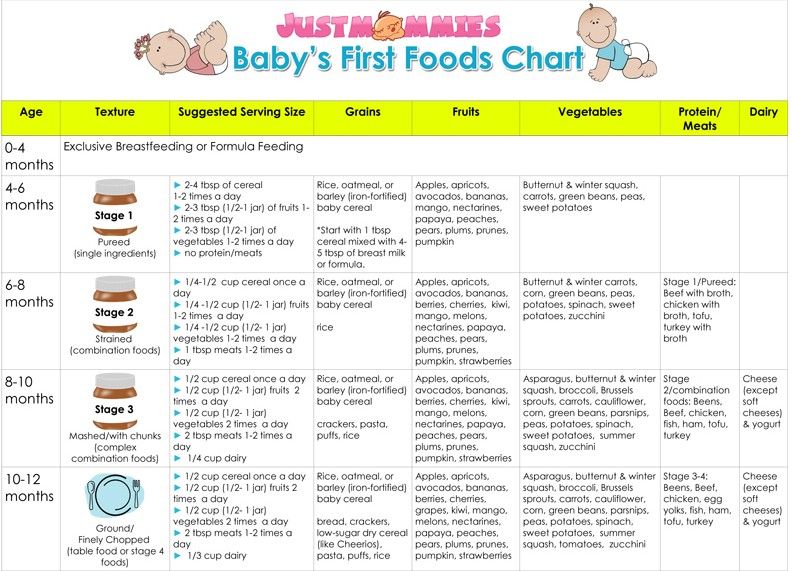
Learn more




